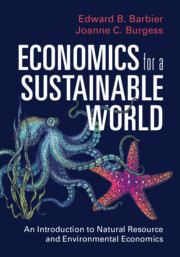Land Degradation, Less Favored Lands and the Rural Poor:
A Spatial and Economic Analysis
A Report for the Economics of Land Degradation Initiative
Edward B. Barbier and Jacob P. Hochard, Department of Economics of Finance, University of Wyoming
31 May 2014
Project Summary
The following study employs geographic information system (GIS) analysis and spatially referenced data to map rural population on degrading versus improving agricultural land, less favored agricultural land and less favored agricultural areas. Degrading agricultural land consists of agricultural land with a negative change in Net Primary Productivity (NPP) from 1981-2000, and improving agricultural land consists of agricultural land with a non-negative change in NPP from 1981-2000. Less favored agricultural land is susceptible to low productivity and degradation, because its agricultural potential is constrained biophysically by terrain, poor soil quality or limited rainfall. Less favored agricultural areas include all less favored agricultural land plus favorable agricultural land with limited market access (i.e. located in remote areas), which is identified as more than five hours of travel to a market city with a population of 50,000 or more. This analysis of the geographical distribution of rural populations is conducted globally, across the developing world, by region and by country, and for two time periods, 2000 and 2010. These spatial data sets are used in a cross-country econometric analysis to determine how changes in poverty are affected by the spatial distribution of rural populations in developing countries on degrading and improving agricultural land, less favored agricultural lands and less favored agricultural areas. Finally, the results of the spatial and econometric analysis inform how better policies can be implemented to improve sustainable land management and poverty alleviation.
- Final Report (4,180kb PDF)
- 2000 Less Favored Agricultural Land/Areas (HTML Table)
- 2010 Less Favored Agricultural Land/Areas (HTML Table)
- 2000 to 2010 Change in Less Favored Agricultural Land/Areas (HTML Table)
- 2000 Net Primary Productivity (Degrading/Improving Agricultural Land) (HTML Table)
- 2000 Net Primary Productivity (Degrading/Improving Agricultural Land) (HTML Table)
- 2000 to 2010 Change in Net Primary Productivity (Degrading/Improving Agricultural Land) (HTML Table)
- Download the above 6 tables as Excel spreadsheet (305kb Excel)
- Maps of 2000 and 2010 Degrading/Improving Agricultural Lands and Less Favored Agricultural Land/Areas

